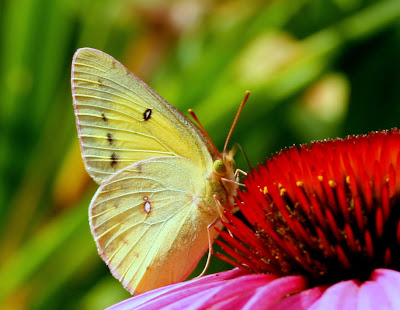This bumblebee tried to chase the meadow fritillary, Boloria bellona, away, but the fritillary held fast. That must have been one tasty flower!
It seems to be missing part of its right hindmost leg.
This is the first time I have noticed the lovely common buckeye, Junonia coenia, in our garden.
It has 6 eyes visible on the top side of the wings.
The 6 eyes and the 4 orange bars make for a very handsome butterfly.
The purple conflowers attract many other insects and I have even seen a hummingbird feeding at the flowers. Even after the flower is gone, the seed heads attract quite a few birds. Hard to go wrong when you have purple coneflower in your garden!



















































